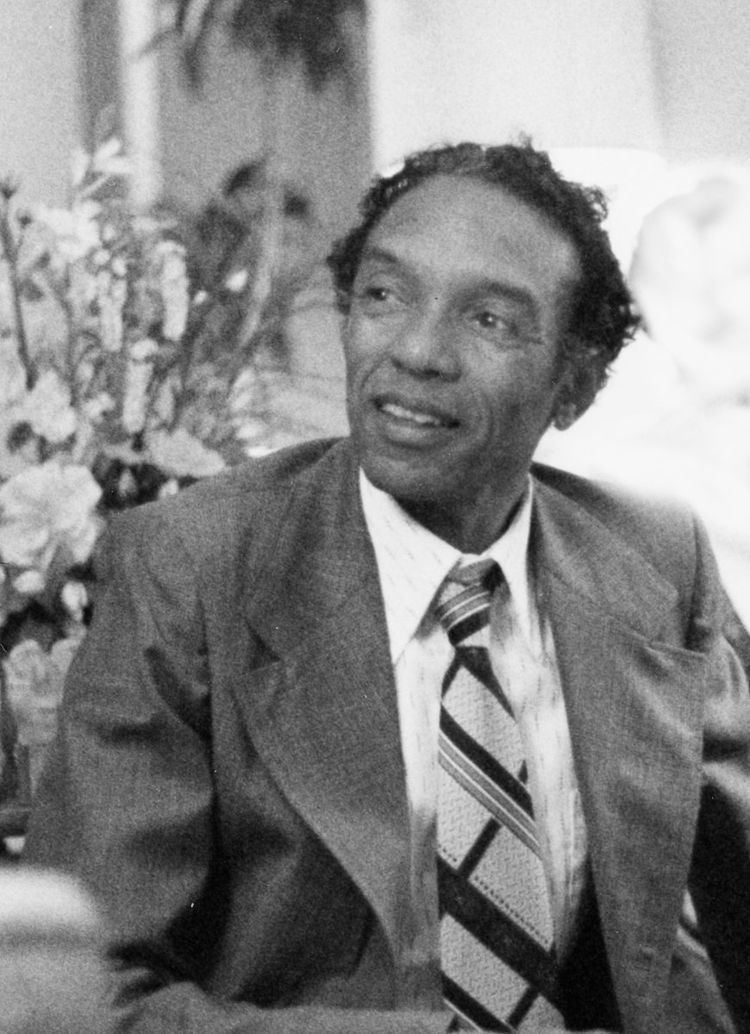Religion Quaker | Name Wilson Head Role Sociologist | |
 | ||
Nationality AmericanCanadian from 1965 Spouse(s) Phyllis Drescher (1947-1972). Sandy Chapman (1972-1993, his death) Children Norman Head, born 1948Gregory Head, born 1953Renee Head, born 1958Cynthia Head, born 1963 Died October 7, 1993, Toronto, Canada Resting place Agincourt Collegiate Institute, Ontario | ||
Occupation Sociologist, professor | ||
Wilson A. Head (September 30, 1914 – October 7, 1993) was an American/Canadian sociologist and community planner known for his work in race relations, human rights and peace in the United States, Canada and other parts of the world.
Contents
Early life
Wilson Adonijah Head was born on September 30, 1914 in Milner, Georgia. He "was the son of a Georgia sharecropper, Evander Head (1892-1925), and of Evelyn Whittle (1898-1981), the eldest of five children"; siblings Frank, Marvin, Glenn, and Winnie Head. He grew up in poverty in the small black community of Milner, near Atlanta. His father died when he was 11, but his mother stressed the importance of education, telling him he would have to be "twice as smart as whites to compete". "He was once fired from a job for glancing at a newspaper. His boss didn't think blacks should know how to read. His mother took in laundry but when Head delivered it to her white customers, white boys would throw bricks at him or jump him." Wilson worked to put himself through school, graduating from Booker T. Washington High School in 1933 and, after taking two years to work and save the fees, graduated from Tuskegee Institute, Tuskegee, Alabama in 1940 with a Bachelor of Science in Education, by which time he had been named in Who's Who Among Students in American Universities and Colleges, 1939-40. In his memoirs, A Life on the Edge: Experiences in Black and White in North America, Dr. Head describes the poverty and injustices to which Black people in the "Deep South" were subjected, and which he experienced in his youth.
Biography
In the 1930s, Dr. Head took part in a series of "sit-ins" on restaurants and bars, and protested against barbers, shop keepers, and movie house owners who would not serve blacks a decade before the civil rights movement began. He also helped to desegregate a golf course in Windsor.
He worked at times with the Congress of Racial Equality (CORE) and the National Association for the Advancement of Colored People (NAACP). From 1943 to 1948, he was director of community development and community organization at Flanner House in Indianapolis, which served poor and indigent Black people. "In 1981, then president of the National Black Coalition of Canada, he testified before the Joint House Senate Committee on the Canadian Constitution". He was on the executive of The Metro Committee on Race Relations and Policing.
Dr. Head moved to Windsor, Canada in 1959 "to get my children away from a racist society". In the US, he had been director of Chicago's Parkway Community House, and director of the State of Ohio's Juvenile Diagnostic Centre. When he came to Canada in 1959, he was the Executive Director of the Windsor Group Therapy Project. In 1965 he became the Director of Research and Planning for the Social Planning Council of Metropolitan Toronto.
"He lectured in Social Work at the University of Windsor, 1960-1964, University of Michigan, 1962-1964, Wayne State University, 1963-1965 and Sir Williams College, Chicago, 1961-1964. He was involved with a number of organizations including the Canadian Civil Liberties Association of Toronto as Vice-President in 1967, The National Welfare Council founding member and National Black Coalition of Canada as Chairman and President from 1977 to 1982. Dr. Head became the first chairman of the Bachelor of Social Work Program at Atkinson College, York University".
In 1988 Dr. Head was asked to participate in the Donald Marshall Inquiry Commission in Nova Scotia. This investigation led to his paper Discrimination Against Blacks in Nova Scotia: The Criminal Justice System.
Assault
On June 26, 1980 Dr. Head was assaulted while climbing the steps to the offices of UARR (Urban Alliance on Race Relations), College Street at Spadina Avenue, Toronto. He was attacked from behind with several blows to the head, resulting in a fall down the stairs. It took the police over 40 minutes to arrive at the scene after being called. The identity of his white assailant was never discovered.
Ideology
Dr. Head was raised in the Baptist Church, but became a member of the Quakers (Society of Friends) in the 1940s. The Quakers supported him in his own convictions of pacifism, egalitarianism, and conscientious objection to military service. He was seen as a "moderate" in his views on combating racism, although he was notably the first to put racism on the agenda of the Canadian conscience. His "quiet, reasonable style became his hallmark". He opposed segregation of the races all his life. "He denounced the idea of all-black schools and social services, asserting, 'segregation is inherently inferior'". In his role as executive of the Metro Committee on Race Relations and Policing in Toronto, he was an "outspoken critic of Metro police", citing racial profiling in their practices. Dr. Head fought fiercely against poverty in Canada. He strove for peace and disarmament as Chairman of the Toronto Chapter, "World Conference on Religion and Peace", 1978-1984, member of "Science for Peace: Operation Dismantle", member of "Social Workers for Peace and Disarmament", on the steering committee for "Disarmament and Peace Movements", and member of "Toronto Disarmament Network" "If the bomb falls, race relations will not matter; we will all be dead." He also advocated for the abolition of prisons.
Death
Dr. Head died of cancer of the prostate at Mount Sinai Hospital, Toronto, Ontario on October 7, 1993.
Legacies
Education
Honors/Awards
Dr. Head received countless honors and awards in his lifetime, among which are:
Works
Dr. Head authored and coauthored numerous research studies and articles, the more notable of which are:
